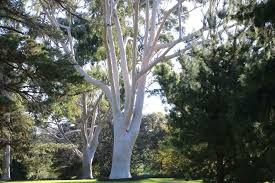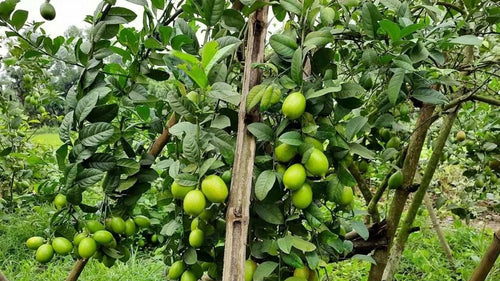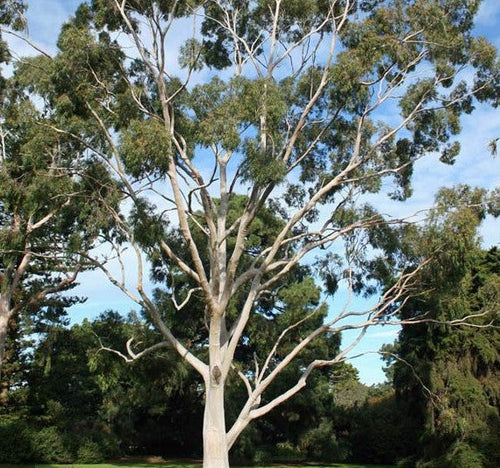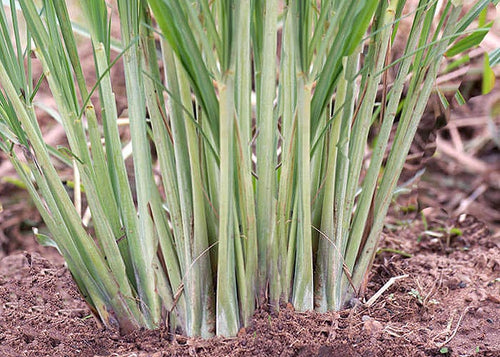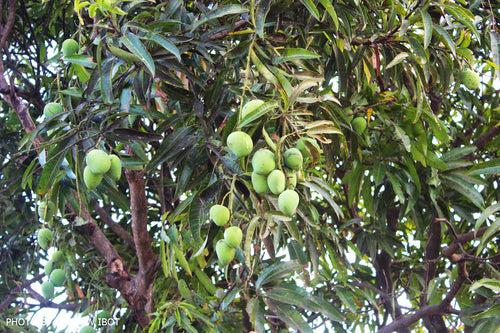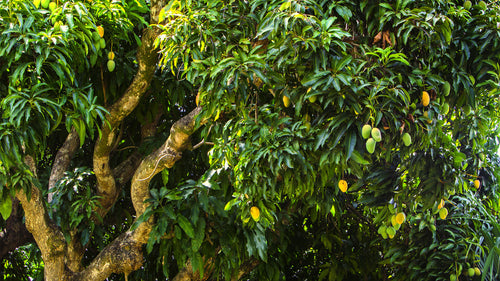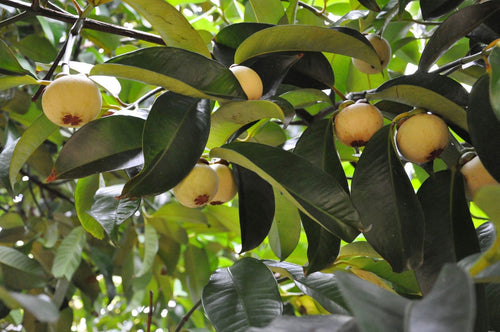Mr. Lochan M. Leads the Way: A Green Birthday Celebration in Bangalore
Mr. Lochan M. celebrated his birthday this year in a unique and impactful way by planting trees with his family and friends as part of an urban forest Read more
Project Update 2





Project Update 1










Digital Forest
Forest with 50 Trees planned
Want to plant your tree now?
Plant a Tree @ 299Mr. Lochan M. Leads the Way: A Green Birthday Celebration in Bangalore
Mr. Lochan M. celebrated his birthday this year in a unique and impactful way by planting trees with his family and friends as part of an urban forest initiative in Bangalore. The event was a heartfelt gesture towards environmental sustainability, with the group actively participating in planting saplings in a designated urban forest area. This initiative aims to create a greener Bangalore, improve air quality, and enhance biodiversity within the city.
The urban forest concept focuses on transforming urban spaces into thriving ecosystems, promoting ecological balance while offering a serene green haven for residents. Such initiatives encourage community participation and foster a sense of responsibility toward protecting our planet.
Message from Mr. Lochan M. :
"This year, I wanted to do something meaningful for my birthday. Planting trees with my family was a fulfilling experience, knowing that we are contributing to a greener and healthier planet. I encourage everyone to take part in such initiatives and make a positive impact on our environment."
Mr. Lochan's thoughtful celebration serves as an inspiration for others to embrace sustainable practices and create lasting environmental benefits for future generations. Together, we can transform urban landscapes into vibrant green spaces that support both people and nature.
Tree Plantation Date
20th May 2024
Plantation Location
Sir M Vishweshwaraiah Layout, 2nd Block, Bangalore, Karnataka-560060
Trees Planted
Total Count: 50 Trees
Species Name: Lemon, Mango, Gudhal
Forest Type: Urban Forest
Mr. Lochan M. celebrated his birthday in a meaningful way by participating in an urban forest tree plantation initiative in Bangalore. Joined by his family and friends, he planted saplings in a designated urban forest area, contributing to the creation of a lush green space in the heart of the city. Urban forests play a vital role in combating the adverse effects of urbanization by improving air quality, reducing urban heat, and supporting biodiversity. They provide a habitat for various species, enhance groundwater recharge, and serve as serene recreational spaces for communities. By planting trees in this urban forest, Mr. Lochan M. contributed to a sustainable initiative that not only beautifies the city but also strengthens its ecological balance. His thoughtful celebration highlights the importance of urban forests as a solution to climate change and a step toward a healthier, greener future for all.
Advantages Of Urban Forest
Improved Air Quality
Urban forests are vital in combating air pollution, which is a growing concern in cities like Bangalore. The trees planted during this initiative will act as natural air purifiers, filtering out harmful pollutants such as carbon monoxide, sulfur dioxide, and nitrogen dioxide. In addition, they absorb dust and other particulate matter, ensuring cleaner and fresher air. As the trees grow, their contribution to improving air quality will expand, benefiting both human health and the environment.
Temperature Regulation
One of the most pressing challenges in urban areas is the urban heat island effect, where cities become significantly warmer than their surrounding rural areas due to concrete structures and reduced vegetation. The trees planted by Mr. Lochan M. will create shaded areas and increase greenery, naturally cooling the environment. This cooling effect not only makes urban areas more comfortable for residents but also reduces energy consumption from air conditioning, contributing to lower carbon emissions.
Enhanced Biodiversity
Urban forests serve as sanctuaries for wildlife, offering a habitat for birds, insects, and small mammals that struggle to survive in highly urbanized environments. The saplings planted in this initiative will grow into a lush ecosystem, supporting a diverse range of species. By fostering biodiversity, these forests contribute to ecological balance, ensuring that even urban areas can coexist harmoniously with nature.
Stormwater Management
Heavy rainfall in cities often leads to waterlogging and flooding due to inadequate drainage systems and extensive concrete surfaces. Trees play a critical role in absorbing rainwater and reducing runoff. The roots of the trees planted will help in holding soil and absorbing excess water, mitigating the risk of floods. Over time, they will also aid in groundwater recharge, addressing water scarcity issues in Bangalore.
Improved Mental and Physical Well-being
The importance of green spaces for human well-being cannot be overstated. Urban forests provide serene environments where people can escape the stress of daily life. Research shows that spending time in green spaces lowers stress levels, enhances mood, and promotes mental health. Moreover, these areas encourage physical activity such as walking, jogging, or yoga, which contribute to a healthier lifestyle. The trees planted during this initiative will help create such spaces, improving the quality of life for nearby residents.
Community Engagement
This tree plantation initiative brought together family and friends, fostering a sense of community and shared purpose. Such events encourage individuals to actively participate in sustainability efforts and inspire others to do the same. By planting trees together, participants strengthen their bond with one another and with nature, creating a ripple effect of environmental consciousness in the community.
Carbon Sequestration
The fight against climate change relies heavily on reducing carbon dioxide levels in the atmosphere. Trees are natural carbon sinks, absorbing carbon dioxide during photosynthesis and storing it as biomass. The trees planted as part of this initiative will actively contribute to reducing greenhouse gases, helping to mitigate the effects of climate change on a local and global scale.
Aesthetic and Economic Value
Urban forests significantly enhance the visual appeal of cities, turning barren or underutilized land into thriving green landscapes. This transformation not only makes cities more attractive and livable but also boosts property values in surrounding areas. Additionally, green spaces have the potential to attract eco-tourism and contribute to local economies by drawing visitors who appreciate nature’s beauty.
Educational Opportunities
Tree plantation initiatives like this serve as powerful educational tools, raising awareness about the importance of conservation and sustainability. They provide hands-on learning experiences for participants, helping them understand how urban forests combat environmental challenges like air pollution, climate change, and habitat loss. By participating in this initiative, Mr. Lochan M. and his group became ambassadors for environmental stewardship, spreading awareness to others.
Legacy for Future Generations
The trees planted during this initiative represent a long-term investment in the planet’s future. Over the years, they will grow into a thriving forest, providing benefits for decades to come. This initiative serves as a living legacy, demonstrating how individual actions today can create a greener and healthier world for future generations. It stands as a beacon of inspiration, encouraging others to contribute to building a sustainable future.
Activities During Tree Plantation
For Mr. Lochan M.’s tree plantation initiative to celebrate his birthday, the site was thoughtfully prepared beforehand to ensure a smooth and impactful experience. On the day of the event, Mr. Lochan M., along with his family and friends, participated in planting saplings at the designated urban forest site. The group worked together to place the saplings in pre-dug pits, ensuring proper spacing and alignment for their healthy growth. After planting, they carefully watered the saplings, symbolizing their commitment to nurturing these trees for the future. The activity was not only a meaningful celebration but also a collective effort to contribute to a greener and more sustainable environment.
Tree Plantation Purpose
Mr. Lochan M.’s tree plantation initiative in the urban forest concept for his birthday effectively supports a range of Sustainable Development Goals (SDGs), promoting both environmental sustainability and community engagement. Below are the SDGs achieved through this initiative:
1. SDG 3: Good Health and Well-being
The plantation of trees contributes directly to improving the health and well-being of individuals and communities. Urban forests act as green spaces where people can engage in outdoor activities like walking, running, or simply relaxing, all of which are beneficial for mental health. The presence of trees also helps in reducing pollution, which is a key factor in respiratory diseases, thus contributing to better overall health outcomes for urban populations.
2. SDG 4: Quality Education
Through this initiative, Mr. Lochan M. and his participants had the opportunity to learn about the importance of trees, urban forests, and environmental conservation. Tree plantation initiatives offer educational benefits by raising awareness about sustainability practices and encouraging knowledge transfer about biodiversity, ecosystem management, and climate change mitigation. This hands-on involvement promotes environmental literacy and builds a deeper understanding of the importance of taking care of nature.
3. SDG 6: Clean Water and Sanitation
Urban forests play a significant role in water management. The trees planted in this initiative will help with rainwater absorption, preventing surface runoff, and allowing water to be stored in the soil, which helps recharge groundwater levels. The trees also reduce the risk of urban flooding, improving the overall water management system within cities and ensuring that local communities have access to cleaner water sources.
4. SDG 7: Affordable and Clean Energy
The cooling effect provided by trees in urban forests reduces the need for air conditioning and other energy-intensive cooling solutions. By planting trees, the initiative contributes to reducing energy consumption in the area. Additionally, urban forests help lower the city’s overall carbon footprint by regulating temperature and decreasing the demand for artificial energy sources.
5. SDG 8: Decent Work and Economic Growth
By promoting urban forestry, Mr. Lochan M.’s initiative helps create new opportunities for employment, particularly in the areas of landscape maintenance, horticulture, and environmental management. In the long run, the development of urban forests can support eco-tourism, which can boost local economies by attracting visitors and creating job opportunities in the green sector.
6. SDG 9: Industry, Innovation, and Infrastructure
While urban forests themselves may not directly relate to industrial infrastructure, they indirectly contribute to building resilient infrastructure by supporting better urban planning and improving urban landscapes. Green spaces reduce the environmental stress on urban areas and encourage more sustainable construction practices, which can be integrated into broader urban development goals.
7. SDG 11: Sustainable Cities and Communities
This tree plantation initiative contributes directly to building more sustainable cities by increasing the amount of green space in urban areas. Urban forests help improve the aesthetic appeal of cities, enhance air quality, and provide ecological services such as flood regulation. By planting trees in Bangalore, Mr. Lochan M. contributed to the development of a greener, healthier, and more livable urban environment, which is key to making cities sustainable and resilient.
8. SDG 12: Responsible Consumption and Production
Through this initiative, Mr. Lochan M. promoted responsible environmental practices by encouraging tree plantation and the cultivation of greenery. By engaging in an activity that directly benefits the environment, participants adopted more sustainable habits and became more aware of the importance of preserving natural resources. This helps shift societal consumption patterns toward more eco-friendly and sustainable practices.
9. SDG 13: Climate Action
The planting of trees is one of the most effective ways to mitigate climate change. Trees act as carbon sinks, absorbing carbon dioxide from the atmosphere and reducing the levels of greenhouse gases. By planting saplings during his birthday celebration, Mr. Lochan M. contributed to reducing the carbon footprint and enhancing efforts to combat climate change in Bangalore, supporting the global fight against rising temperatures.
10. SDG 15: Life on Land
Urban forests contribute significantly to the conservation of biodiversity by providing a habitat for various species of flora and fauna. The trees planted in this initiative help support local wildlife, offering food and shelter to birds, insects, and other animals. This effort aligns with the goal of protecting, restoring, and promoting the sustainable use of terrestrial ecosystems, ensuring the long-term preservation of biodiversity.
11. SDG 17: Partnerships for the Goals
Mr. Lochan M.’s partnership with Grow Billion Trees has played a crucial role in advancing the achievement of SDG 17: Partnerships for the Goals. Through this collaboration, he has strengthened the collective effort to combat climate change and promote environmental sustainability by participating in large-scale tree plantation initiatives. Grow Billion Trees, with its mission to restore and expand green spaces globally, provided the necessary support and expertise for the initiative, ensuring that each sapling planted contributes to long-term ecological benefits. By joining forces, Mr. Lochan M. and Grow Billion Trees have fostered a spirit of collaboration, engaging local communities and encouraging others to take action. This partnership exemplifies how individual and organizational efforts can align to drive global change, contributing to the creation of a sustainable future through joint action and resource sharing.
ESGs Achieved Through Urban Forest
Environmental (E)
Mr. Lochan M.’s tree plantation initiative in the urban forest concept directly contributes to various environmental goals. By planting saplings, this initiative helps in combating deforestation and land degradation, thereby enhancing biodiversity. The trees planted contribute to reducing the urban heat island effect by providing shade and cooling the surrounding areas, which is especially vital in cities like Bangalore where the temperature often rises due to rapid urbanization. Additionally, the trees play a significant role in mitigating climate change by absorbing carbon dioxide from the atmosphere and releasing oxygen, contributing to cleaner air. Moreover, these urban forests help manage stormwater by reducing runoff and promoting groundwater recharge, thus supporting better water management in urban areas.
Social (S)
The social impact of Mr. Lochan M.’s tree plantation initiative is equally significant. The event brought together family, friends, and the local community to participate in a meaningful and engaging activity, fostering a sense of togetherness and shared responsibility toward environmental stewardship. It encouraged social participation in sustainability efforts, raising awareness about the importance of trees and green spaces for overall well-being. By involving a diverse group of individuals, the initiative also promoted environmental education and the understanding of urban ecosystems. Furthermore, the development of green spaces improves the mental and physical well-being of local residents, offering a tranquil environment for recreation and reducing the psychological effects of urban stress.
Governance (G)
Through his collaboration with Grow Billion Trees, Mr. Lochan M. demonstrated strong governance practices by aligning the tree plantation initiative with globally recognized sustainability goals. This initiative not only reflects responsible environmental stewardship but also highlights the importance of accountability and transparency in executing large-scale green projects. The partnership emphasized ethical practices and the need for long-term environmental commitments. By adhering to a governance framework that prioritizes sustainability, collaboration, and community engagement, Mr. Lochan M. has set an example of how individuals can influence positive change and contribute to global environmental targets. The initiative also underlines the importance of partnerships between individuals, organizations, and environmental groups to address shared goals such as climate action and biodiversity conservation.
Commitment by Grow Billion Trees
Grow Billion Trees is committed to driving sustainable plantation efforts, ensuring every initiative aligns with key environmental objectives and promotes long-term ecological balance. We focus on selecting native tree species that are well-adapted to local ecosystems, ensuring a higher survival rate and stronger environmental impact.
To maintain plant health and longevity, Grow Billion Trees emphasizes continuous maintenance and regular monitoring of the plantations. This approach helps ensure that each tree thrives, contributing effectively to both biodiversity and climate resilience.
Transparency is a core principle in our operations. Clients receive comprehensive reports, including geo-tagging of planted trees, survival rate updates, and ongoing progress reports. This level of openness allows clients to track the direct impact of their contributions, reinforcing trust and accountability.
Through our dedication to sustainable practices, Grow Billion Trees ensures that every plantation project leaves a lasting positive footprint on both the environment and the local communities it serves.
Summary
Mr. Lochan M.’s tree plantation initiative in the urban forest concept, celebrated on his birthday, is a meaningful contribution to environmental sustainability and community well-being. With the site prepped beforehand, Mr. Lochan, along with his family and friends, planted saplings, symbolizing their collective commitment to a greener, healthier planet. The initiative aimed to create a lasting impact by enhancing urban biodiversity, reducing the heat island effect, and improving air quality. Through this effort, the group fostered social unity while raising awareness about the importance of green spaces for mental and physical health. Furthermore, Mr. Lochan’s partnership with Grow Billion Trees helped to strengthen collaboration toward achieving global sustainability goals, particularly in combating climate change. This initiative exemplifies the power of individual actions in fostering community engagement and contributing to the long-term health of the environment.
Trees for Corporates
Trending
Most Popular
Tree Plantation for Individual Contribution
Tree plantation is not just for big organizations or governments—individuals can play a huge role too! Planting trees is a simple yet impactful way for anyone to contribute to environmental sustainability. Whether it’s in your backyard, a local park, or an urban space, planting a tree helps reduce carbon dioxide in the air, provides shade, and enhances local biodiversity. Each tree you plant is a tiny but vital contribution to making the planet a healthier place. Plus, trees can reduce stress and improve mental health, so why not grow your own little piece of tranquility?
Benefits of Urban Forests
Urban forests aren’t just for show—they pack a powerful punch when it comes to improving quality of life in cities. They help cool down urban heat islands, reduce pollution, and provide much-needed green spaces for recreation. These forested areas are vital for enhancing air quality, managing stormwater, and supporting local wildlife. Plus, they provide a serene escape from the hustle and bustle of city life, offering a spot to relax, exercise, and connect with nature. Who knew that a bunch of trees could do so much?
Sustainable Urban Tree Plantation
When planting trees in urban areas, sustainability is key! It’s not just about putting saplings in the ground; it’s about making sure they thrive. Sustainable urban tree plantation involves choosing native species that are adapted to the local climate, using eco-friendly materials, and ensuring the long-term care of the trees. Trees in urban areas can face tough conditions—pavement, pollution, and limited water—so proper planning is essential. But when done right, sustainable urban tree planting can turn gray concrete jungles into green, thriving ecosystems.
Individual Role in Green Urban Planning
Urban planning isn’t just for the city’s architects and engineers—it’s for everyone! As an individual, you can help advocate for green spaces in your neighborhood, support tree-planting campaigns, and even start your own greening projects. The more people who push for greener cities, the more likely it is that urban planners will take action. Whether it’s by pushing for more parks, planting trees in your garden, or joining a community initiative, your efforts matter. Green cities are more sustainable and livable, so why not get involved?
Urban Greening Initiatives
Urban greening initiatives are sweeping the globe, and they’re changing the way we think about city living. From rooftop gardens to tree-lined streets, cities are transforming into vibrant, green spaces that help reduce pollution, support biodiversity, and create a better quality of life for residents. These initiatives not only improve aesthetics but also contribute to economic savings by reducing heating and cooling costs. So, next time you walk through a green street or park, remember—it’s part of a global movement that’s transforming cities for the better.
Climate Change Mitigation through Trees
Did you know trees are like nature’s air filters? They absorb carbon dioxide, reduce greenhouse gases, and help mitigate climate change. In urban areas, trees are especially important for absorbing pollution and reducing the carbon footprint of city living. As individuals, by planting trees, we’re actively helping to fight climate change—one sapling at a time. So, if you’re looking for an easy way to make a difference, go ahead and grab a shovel! Every tree you plant makes the earth a little bit cooler.
Tree Planting Events for Urban Communities
Looking for a fun and impactful way to spend your weekend? Why not join or organize a tree planting event in your community? These events bring together people of all ages to get their hands dirty and make a positive environmental impact. Tree planting events not only help beautify urban areas but also raise awareness about the importance of green spaces. Plus, they’re a great opportunity to meet like-minded individuals who care about the planet. So, gather your friends and family, and go plant a tree together—it’s a win-win for you and the environment!
Urban Tree Plantation and Mental Health Benefits
you’re helping the planet and giving your mind a boost. Now that’s a reason to get planting!
FAQ
What is the importance of tree plantation in urban areas?
Tree plantation in urban areas is essential for improving air quality, reducing pollution, and enhancing the aesthetic value of cities. Trees absorb carbon dioxide, provide oxygen, and cool the environment, which is crucial in combating the urban heat island effect. Urban forests also improve mental well-being, offer recreational spaces, and support biodiversity by providing habitats for wildlife. Additionally, they help manage stormwater, reducing the risk of flooding and ensuring healthier urban ecosystems.
What role does an individual play in urban tree plantation?
As an individual, you can contribute significantly to urban tree plantation by participating in community tree planting events, promoting green spaces, and even planting trees in your own backyard or local area. Every small action counts in creating a healthier, greener environment. Encouraging friends and family to get involved or supporting urban greening initiatives helps spread awareness. Personal involvement in such initiatives not only impacts the environment but also enhances your community's social well-being.
How can individuals contribute to creating urban forests?
Individuals can contribute to urban forests by planting native trees in their neighborhoods, supporting local tree-planting campaigns, or advocating for more green spaces in urban planning. By choosing the right types of trees that thrive in the local climate and contributing to their care, individuals can help increase tree coverage in cities. Additionally, joining environmental groups and participating in urban forest restoration projects can help make cities greener and more sustainable.
Why should we plant trees in urban areas?
Planting trees in urban areas offers numerous environmental, social, and economic benefits. Trees help combat climate change by absorbing carbon dioxide, improving air quality, and reducing the urban heat island effect. They also enhance the quality of life by offering green spaces for relaxation and recreation, improving mental health, and promoting physical activity. Moreover, urban trees manage stormwater and reduce the risk of floods, making cities safer and more resilient to extreme weather events.
How do urban forests help with climate change mitigation?
Urban forests play a significant role in mitigating climate change by acting as carbon sinks. Trees absorb carbon dioxide, one of the major greenhouse gases, helping reduce the overall carbon footprint of urban areas. They also improve air quality by filtering out pollutants like nitrogen dioxide and sulfur dioxide. Urban forests help cool the environment, reducing the need for air conditioning, which in turn lowers energy consumption. By enhancing local biodiversity and providing green spaces, they contribute to a more resilient and sustainable city.
What are the benefits of having green spaces in cities?
Green spaces in cities offer multiple benefits. They provide much-needed areas for recreation and relaxation, improving the mental and physical well-being of residents. These spaces promote biodiversity by supporting various species of plants and animals. Green spaces also improve air quality, reduce pollution, and mitigate the effects of urban heat islands by providing shade and cooling. Additionally, they enhance the aesthetic appeal of cities, making them more attractive places to live and work, which can also have a positive impact on property values.
How does urban tree planting affect local wildlife?
Urban tree planting creates habitats for a variety of local wildlife, including birds, insects, and small mammals. Trees provide shelter, food, and nesting sites for these species, helping to sustain local biodiversity. By adding more trees to urban areas, we can support the survival of native wildlife and create an ecological balance within cities. Urban forests also provide corridors for animals to move between green spaces, which is crucial for maintaining biodiversity in rapidly urbanizing environments.
How can urban forests reduce pollution?
Urban forests help reduce pollution in several ways. Trees absorb carbon dioxide and other harmful gases like sulfur dioxide and nitrogen oxides from the air, thus improving air quality. Their leaves and bark also trap particulate matter, such as dust and smoke, preventing it from being inhaled by city dwellers. Additionally, trees reduce the urban heat island effect, which can intensify air pollution. By enhancing green spaces and increasing tree cover, urban forests act as natural air purifiers, benefiting both the environment and human health.
What types of trees are suitable for urban tree plantation?
The best trees for urban tree plantation are those that are drought-tolerant, pollution-resistant, and able to thrive in the local climate. Native species are ideal as they are adapted to the environment and provide habitat for local wildlife. Common choices include neem, peepal, banyan, and tamarind, as well as flowering trees like the gulmohar and jacaranda. Choosing the right trees ensures long-term survival and minimal maintenance, helping to create sustainable green spaces in urban areas.
How do urban forests benefit mental health?
Urban forests contribute to mental well-being by providing green spaces for relaxation, stress relief, and physical activity. Spending time in nature has been shown to reduce anxiety, improve mood, and enhance cognitive function. The presence of trees and green spaces in cities offers a peaceful escape from the hustle and bustle of urban life. Whether it's through a leisurely walk in the park or simply enjoying the view, urban forests provide a calming effect, improving the overall quality of life for city residents.
- Choosing a selection results in a full page refresh.
- Opens in a new window.



